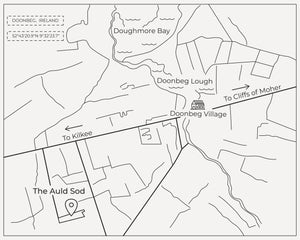
Why We Share the Land
At The Auld Sod, we offer more than a plot — we offer connection. This land lets you honour your roots, form new ones, and play a part in protecting Ireland’s natural heritage for future generations.
Past, Present... Protected
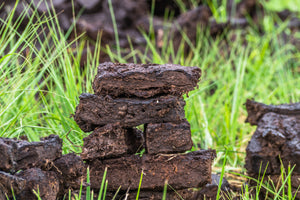
Past
For much of Ireland’s history, boglands were seen as rough, unused terrain — valued mainly for the turf they provided. Harvested out of necessity, not reverence, and often overlooked for their ecological importance. Yet while their value lay in fuel, their quiet power as ecosystems remained hidden. Only now are we beginning to understand just how vital these landscapes have always been.
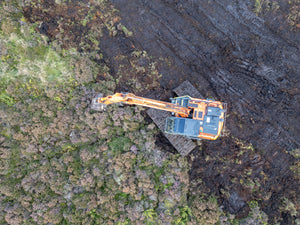
Present
Today, our understanding has shifted. Scientists now know that bogs are among the world’s most powerful carbon sinks, storing more carbon per hectare than forests. But decades of turf cutting have damaged these ecosystems. Now, they need repair — to support biodiversity, to store carbon, and to help Ireland play its part in the global fight against climate change.
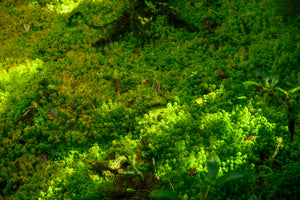
Future
Restored boglands are key to a healthier planet. They filter water, protect wildlife, regulate climate, and store carbon for thousands of years. By preserving and protecting what remains, we’re investing in a future where nature works with us — not against us. The Auld Sod represents that promise: a living link between heritage and hope.
Ireland's Boglands: A Way of Life
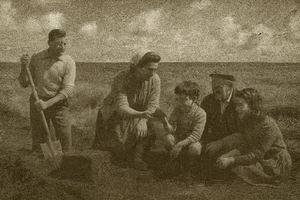
Family
Turf cutting was done with a sleán, a narrow spade used to slice blocks of peat from the bog face. The process was physically demanding but deeply rooted in tradition. Families returned to the same spot year after year, cutting, stacking, and turning turf in rhythm with the land — and with each other.
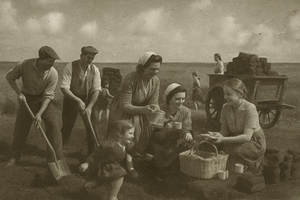
Community
Beyond the work, turf season was a time of connection. Neighbours came together to help each other, share stories, and pass down skills. The bog became a place of bonding — where effort, laughter, and heritage were shared under the open sky.
A Place to Belong
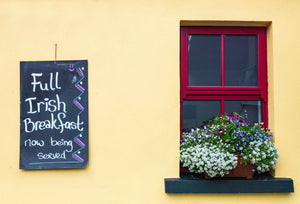
Doonbeg: A Village with a Heart
Doonbeg is a small, welcoming village rich in Irish character. Known for its traditional pubs, stone bridges, and warm locals, it captures the rhythm of rural West Clare. Doonbeg’s landscape and community spirit make it a perfect setting for something as meaningful as The Auld Sod.
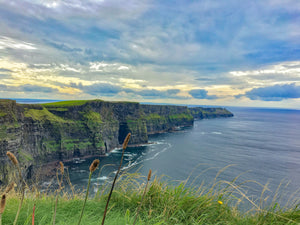
The Wild Atlantic Way
Stretching along Ireland’s western seaboard, the Wild Atlantic Way is one of the most scenic routes in the world — and County Clare is home to some of its most iconic views. From the Cliffs of Moher to hidden beaches and windswept bogs, this stretch of coast is wild, raw, and unmistakably Irish.
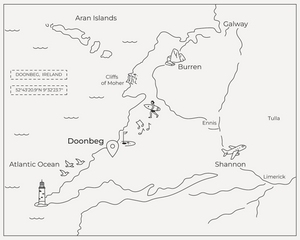
Doonbeg
In the midst of the west coast of County Clare, Doonbeg Village sits proudly at the mouth of Doughmore Bay. From the towering Cliffs of Moher to the lunar landscapes of the Burren and the windswept beauty of Loop Head Lighthouse — the final outpost before the Atlantic — Clare’s Wild Atlantic Way offers a rich backdrop of heritage, nature, and awe-inspiring scenery.
Your Auld Sod
The Auld Sod site is located within Tullaher Bog, just outside Doonbeg village, along the scenic Slí na Sláinte walking route. This trail winds through raised bog, fen, and grassland, all within sight of Doughmore Bay and the surrounding landscape. The site reflects a deep connection to Ireland’s natural heritage — where every plot supports the preservation of a truly unique and biodiverse ecosystem.
